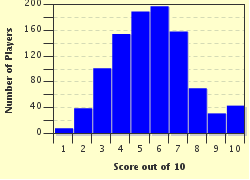Quiz Answer Key and Fun Facts
1. The Nazi regime did not speak openly about the Holocaust but used euphemisms. Which of these terms did they NOT use?
2. When were the extermination camps at Belzec, Chelmno, Sobibor and Treblinka liberated?
3. You want to see a document, signed by Hitler, specifically ordering the 'Final Solution of the Jewish Question'. Where are you most likely to see it?
4. How was the Holocaust financed for the most part?
5. In 1945 Soviet investigators estimated the number of people killed at Auschwitz at 4 million, and three years later the Poles put up a memorial plaque to the 'four million' Auschwitz victims. This very high figure was disputed at the time, and the Soviet government revised it to 2.5-4 million. In 1990, following research by the Auschwitz Museum, it was replaced by a new plaque, with a figure of 1.5 million. Immediately, some stridently demanded that the total number of Holocaust victims be revised down from 6 million to 3.5 million. Why was this demand misplaced?
6. In what forum and when was the figure of six million Holocaust deaths first mentioned in writing in public?
7. One of Nazi Germany's allies, not content simply to hand Jews over to the SS, actually paid the SS to remove many of its Jews. Which country was it?
8. After its devastating losses at Stalingrad, Hungary showed growing signs of becoming an unenthusiastic member of the Axis. Admiral Horthy, the Hungarian regent (actually dictator) was summoned to Berlin, where Hitler and Ribbentrop took him to task (16-17 April 1943) for dragging his feet on the 'Jewish Question'. Horthy replied that Hungary had already taken all kinds of measures against the Jews and he then added something. What was it?
9. What was the *official* function of the 'Einsatzgruppen' (mobile killing units), which went into action behind German lines three days after the start of Operation Barbarossa (the German invasion of the Soviet Union)?
10. Was the Holocaust reported during World War II in the media in Britain, the U.S and other English-speaking countries?
Source: Author
bloomsby
This quiz was reviewed by FunTrivia editor
Exit10 before going online.
Any errors found in FunTrivia content are routinely corrected through our feedback system.

